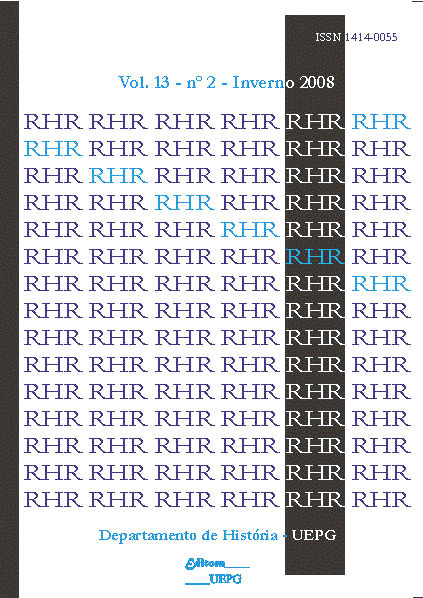Campo Grande on the route from Marcha para Oeste
Keywords:
Identidade, Territorialidade, Representação, SertãoAbstract
The Estado Novo (1937-1945) was a period of significant change for Mato Grosso. The program of colonization entitled Marcha para Oeste, announced by President Vargas, in 1937, renewed not only the prospects of development for the state, but at the same time opened the possibility of the arrival of new social actors, represented, on one side, for entrepreneurs / investors and, in addition, for new urban characters, like employees, players, prostitutes, etc.. Generally speaking, both could mean threat to the dominant local elites. Accordingly, this article intends to discuss the reordenamentos, occurring at the time, within those elites at the same time if empenhavam in developing and / or strengthening of the positive images on the state, in order to, definitely, delete the "stigma of barbarism" that the traditionally characterized.Downloads
Downloads
Published
How to Cite
Issue
Section
License
Copyright (c) 2009 Carlos Alexandre Barros Trubiliano, Carlos Martins Júnior

This work is licensed under a Creative Commons Attribution 4.0 International License.
Autores que publicam nesta revista concordam com os seguintes termos:
a) Os autores mantêm os direitos autorais e concedem à revista o direito de primeira publicação, com o trabalho simultaneamente licenciado sob a Creative Commons Attribution License que permite o compartilhamento do trabalho com reconhecimento da sua autoria e publicação inicial nesta revista.
b) Os autores são autorizados a assinarem contratos adicionais, separadamente, para distribuição não exclusiva da versão publicada nesta revista (por exemplo, em repositórios institucionais ou capítulos de livros), com reconhecimento da sua autoria e publicação inicial nesta revista).
c) Os autores são estimulados a publicar e distribuir a versão onlline do artigo (por exemplo, em repositórios institucionais ou em sua página pessoal), considerando que isso pode gerar alterações produtivas, bem como aumentar o impacto e as citações do artigo publicado.
d) Esta revista proporciona acesso público a todo o seu conteúdo, uma vez que isso permite uma maior visibilidade e alcance dos artigos e resenhas publicados. Para maiores informações sobre esta abordagem, visite Public Knowledge Project, projeto que desenvolveu este sistema para melhorar a qualidade acadêmica e pública da pesquisa, distribuindo o OJS assim como outros softwares de apoio ao sistema de publicação de acesso público a fontes acadêmicas.
e) Os nomes e endereços de e-mail neste site serão usados exclusivamente para os propósitos da revista, não estando disponíveis para outros fins.

Este obra está licenciado com uma Licença Creative Commons Atribuição 4.0 Internacional.

Este obra está bajo una licencia de Creative Commons Reconocimiento 4.0 Internacional.







